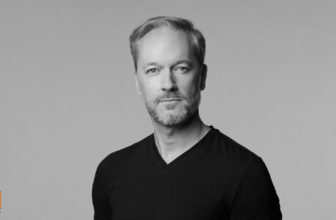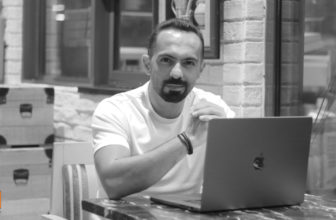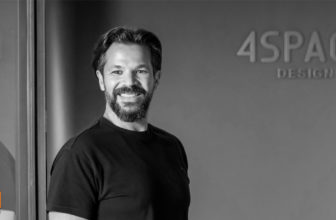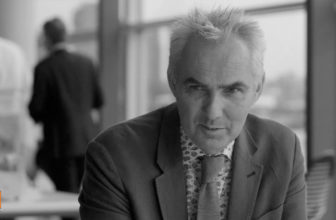Born in Vienna in 1942, Wolf D. Prix is an architect, educator and CEO of COOP HIMMELB(L)AU. He studied architecture at the Vienna University of Technology, the Architectural Association of London, and the Southern California Institute of Architecture in Los Angeles. Mr.Prix taught as a visiting professor at the Architectural Association in London in 1984 and at Harvard University in Cambridge, Massachusetts in 1990, an Adjunct Professor at the SCI-Arc in Los Angeles, and faculty member of Columbia University in New York in 1998.
The firm, Coop Himmelb(l)au, was founded in 1968 by Wolf Prix, Helmut Swiczinsky and Michael Holzer and gained international acclaim. The Austrian architect, Mr. Prix, has gained international recognition when his firm’s work was featured in the 1988 MoMA show “Deconstructivist Architecture.” The exhibition featured works by Frank Gehry, Daniel Libeskind, Rem Koolhaas, Peter Eisenman, Zaha Hadid Architects, Coop Himmelb(l)au, and Bernard Tschumi. At this time, the curator of the exhibition, Philip Johnson, brought together this diverse group of architects to showcase the commonalities between projects that harnessed previously unexplored potentials of the modern movement.
The Open Parliament of Albania | Coop Himmelb(l)au
The work of Wolf D. Prix has employed advances in technology as it has been published in numerous books and featured in many museums and collections worldwide. COOP HIMMELB(L)AU’s more recent projects include The Busan Cinema Center, Musée des Confluences, Martin Luther Church, the Open Parliament of Albania, and Dalian International Conference Center. In 2006, he was the commissioner for the Austrian contribution for the 10th International Exhibition of the Venice Biennale. Arch2O had the chance to interview with Wolf Prix, the front man for the Coop.
1. Coffee or Tea?
Espresso.
2. A lighthearted question to start: Explain the (L).
The firm’s name joins the abbreviation of “cooperative” to the German words for „sky blue“, merged with „bau“, German for building. “Himmelb(l)au” is a play on words: including the letter “l” in parenthesis, you have Himmelblau, which means “sky blue” in German. Omitting that letter gives you Himmelbau, or “heaven construction”.
3. Is there one moment in your life that jumps to mind, which shaped who you have become as an architect?
All my ancestors were somehow connected with building or architecture. My father was an architect. There was this moment I got familiar with the work of Le Corbusier. I was stunned when visiting La Tourette for the first time. I was very impressed and deeply touched. When I saw the chapel of La Tourette and also Ronchamp, a free form with the light tubes, I thought: „If this is architecture, then I want to be an architect.“
4. Your website contains a quote, ‘We think of our architecture as part of the 21st century; as art which reflects and gives a mirror image of the variety and vivacity, tension and complexity of our cities.’ How would you relate architecture and art?
It seems to be an age-old battle of sorts- many people spend years pointing out the differences between the two. I’m interested in how you equate them. Architecture becomes art when the idea of a building touches a meta-level. If it doesn’t touch a meta-level it is only a building.
Martin Luther Church | Coop Himmelb(l)au
5. How and when do you start a design?
We do not reveal secrets.
6. How would you describe your style to a stranger recently introduced to you?
I would force him to visit our website.
7. How do you view your body of work? Is it an evolution, are there stages, has it been centered around one thing that you continue to seek?
Our work is a network of ideas, concepts and realization. Compare it with the constantly changing and developing work of Constantin Brancusi.
8. How do you determine the placement of openings in your buildings?
We are designing functional sculptures with the parameters of Open Architecture.
9. When viewing works by COOP HIMMELB(L)AU, one of my most recurrent thoughts is ‘I didn’t expect that’. How do you manufacture this surprise and recurring intrigue? Could you give us a glimpse at your design rationale?
Like Bob Dylan says : You don’t need a weatherman to know which way the wind blows.
10. Your architecture has certain tranquility to it, how do you see your works in conjuncture with the surrounding chaos?
We never react, we always act.
The Busan Cinema Center | Coop Himmelb(l)au
11. If I asked you to pull a book from your shelf, for which one would you unconsciously reach?
“Moby Dick“ by Herman Melville.
In this book you can find the best description of architecture:
»…would now the wind but had a body;
but all the things that most exasperate and outrage mortal
man, all these things are bodiless, but only
bodiless as objects, not as agents.«
12. Who inspires you?
Bob Dylan, Keith Richards, Jaques Derrida, Piranesi, Fischer von Erlach and Le Corbusier.
But if you only think in architectural terms, only architecture will come out.
13. Brahms, Bach, or Dvořák?
Bach, Schönberg, Mozart & Hendrix .
14. Michael Caine was quoted as stating that if he could be anything other than an
actor, he had always wanted to be an architect. If circumstances had shaped things so that you were blocked from doing architecture, what would you be?
An architect.
15. What advice would you give yourself?
Go ahead.
Musée des Confluences | Coop Himmelb(l)au





